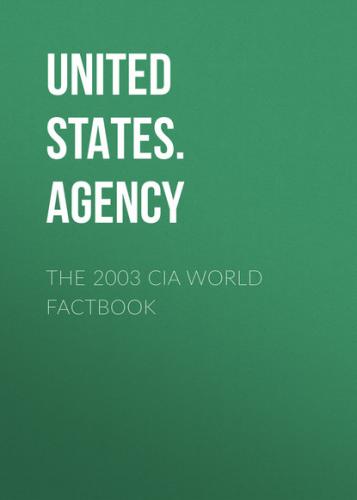12 municipalities (manatiq, singular - mintaqah); Al Hadd, Al
Manamah, Al Mintaqah al Gharbiyah, Al Mintaqah al Wusta, Al Mintaqah
ash Shamaliyah, Al Muharraq, Ar Rifa' wa al Mintaqah al Janubiyah,
Jidd Hafs, Madinat Hamad, Madinat 'Isa, Juzur Hawar, Sitrah
note: all municipalities administered from Manama
Independence:
15 August 1971 (from UK)
National holiday:
National Day, 16 December (1971); note - 15 August 1971 is the date
of independence from the UK, 16 December 1971 is the date of
independence from British protection
Constitution:
adopted late December 2000; Bahrani voters approved on 13–14
February 2001 a referendum on legislative changes (revised
constitution calls for a partially elected legislature, a
constitutional monarchy, and an independent judiciary)
Legal system:
based on Islamic law and English common law
Suffrage:
18 years of age; universal
Executive branch:
chief of state: King HAMAD bin Isa Al Khalifa (since 6 March 1999);
Heir Apparent Crown Prince SALMAN bin Hamad (son of the monarch,
born 21 October 1969)
head of government: Prime Minister KHALIFA bin Salman Al Khalifa
(since NA 1971)
cabinet: Cabinet appointed by the monarch
elections: none; the monarchy is hereditary; prime minister
appointed by the monarch
Legislative branch:
bicameral Parliament consists of Shura Council (40 members
appointed by the King) and House of Deputies (40 members directly
elected to serve four-year terms)
elections: House of Deputies - last held 31 October 2002 (next
election to be held NA 2006)
note: first elections since 7 December 1973; unicameral National
Assembly dissolved 26 August 1975; National Action Charter created
bicameral legislature on 23 December 2000; approved by referendum 14
February 2001; first legislative session of Parliament held on 25
December 2002
election results: House of Deputies - percent of vote by party -
NA%; seats by party - independents 21, Sunni Islamists 9, other 10
Judicial branch:
High Civil Appeals Court
Political parties and leaders: political parties prohibited but politically oriented societies are allowed
Political pressure groups and leaders:
Shi'a activists fomented unrest sporadically in 1994–97, demanding
the return of an elected National Assembly and an end to
unemployment; several small, clandestine leftist and Islamic
fundamentalist groups are active
International organization participation:
ABEDA, AFESD, AL, AMF, ESCWA, FAO, G-77, GCC, IBRD, ICAO, ICC, ICCt
(signatory), ICRM, IDB, IFC, IFRCS, IHO, ILO, IMF, IMO, Interpol,
IOC, ISO (correspondent), ITU, NAM, OAPEC, OIC, OPCW, UN, UNCTAD,
UNESCO, UNIDO, UPU, WCO, WFTU, WHO, WIPO, WMO, WToO, WTrO
Diplomatic representation in the US: chief of mission: Ambassador Khalifa bin Ali bin Rashid AL KHALIFA chancery: 3502 International Drive NW, Washington, DC 20008 consulate(s) general: New York FAX: [1] (202) 362–2192 telephone: [1] (202) 342–0741
Diplomatic representation from the US: chief of mission: Ambassador Ronald E. NEUMANN embassy: Building #979, Road 3119 (next to Al-Ahli Sports Club), Block 321, Zinj District, Manama mailing address: American Embassy Manama, PSC 451, FPO AE 09834–5100; international mail: American Embassy, Box 26431, Manama telephone: [973] 273–300 FAX: [973] 272–594
Flag description:
red with a white serrated band (five white points) on the hoist
side; the five points represent the five pillars of Islam
Economy Bahrain
Economy - overview:
In Bahrain, petroleum production and refining account for about 60%
of export receipts, 60% of government revenues, and 30% of GDP. With
its highly developed communication and transport facilities, Bahrain
is home to numerous multinational firms with business in the Gulf.
Bahrain is dependent on Saudi Arabia for oil granted as aid. A large
share of exports consists of petroleum products made from refining
imported crude. Construction proceeds on several major industrial
projects. Unemployment, especially among the young, and the
depletion of oil and underground water resources are major long-term
economic problems.
GDP:
purchasing power parity - $9.91 billion (2002 est.)
GDP - real growth rate:
2.9% (2002 est.)
GDP - per capita:
purchasing power parity - $15,100 (2002 est.)
GDP - composition by sector: agriculture: 1% industry: 35% services: 64% (2001 est.)
Population below poverty line:
NA%
Household income or consumption by percentage share:
lowest 10%: NA%
highest 10%: NA%
Inflation rate (consumer prices):
0.5% (2002 est.)
Labor force:
295,000
note: 44% of the population in the 15–64 age group is non-national
(1998 est.)
Labor force - by occupation:
industry, commerce, and service 79%, government 20%, agriculture 1%
(1997 est.)
Unemployment rate:
15% (1998 est.)
Budget:
revenues: $1.8 billion
expenditures: $2.2 billion, including capital expenditures of $700
million (2002 est.)
Industries:
petroleum processing and refining, aluminum smelting, offshore
banking, ship repairing; tourism
Industrial production growth rate:
2% (2000 est.)
Electricity - production:
6.257 billion kWh (2001)
Electricity - production by source: fossil fuel: 100% hydro: 0% other: 0% (2001) nuclear: 0%
Electricity - consumption:
